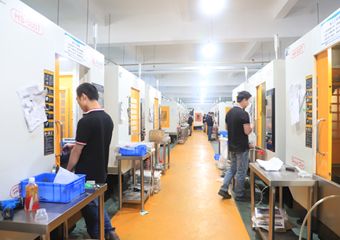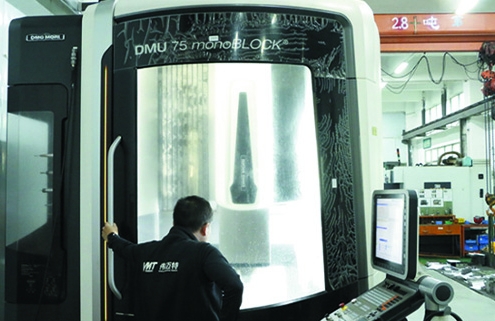3-Axis to 9-Axis: CNC Milling Machine Capabilities Compared
Modern manufacturing relies heavily on CNC machining, where precision and complexity define product quality. From 3 axis CNC to 9 axis CNC, each configuration unlocks unique machining possibilities. Understanding the difference between these systems helps engineers, procurement teams, and designers select the right equipment for the task.
This guide explains everything you need to know about 3-axis to 9-axis CNC machines, their functionality, and how they compare to other axis systems in modern CNC machining.
How CNC Machine Work?
At its core, a CNC machine works by moving cutting tools or workpieces along multiple axes. The more axes a machine supports, the more complex and precise the machining becomes. Each added axis introduces a new degree of movement or rotation, enabling components to be produced in fewer setups and with higher geometric accuracy.

3-Axis CNC Machining
3 axis CNC machining is the foundation of modern milling. It allows movement along the X, Y, and Z axes. The cutting tool remains in a fixed orientation, making this configuration ideal for machining flat surfaces, slots, and simple contours. It’s cost-effective and suitable for basic geometries where the tool doesn’t need to access complex angles or undercuts.
4-Axis CNC Machining
4 axis CNC machines add a rotary movement to the existing three axes. This enables the workpiece to be rotated during machining, which is perfect for creating features on different faces without manually repositioning the part. 4 axis CNC machining is often used for cylindrical components, gear teeth, and parts with radial features.
5-Axis CNC Machining
5 axis CNC machining combines the X, Y, Z linear axes with two rotational axes. This configuration allows the cutting tool to approach the part from virtually any direction. It’s ideal for complex 3D shapes, undercuts, and contoured surfaces. 5 axis CNC significantly reduces the number of setups and ensures high precision, especially for aerospace, medical, and mold components.

6-Axis CNC Machining
6 axis CNC machining builds upon the capabilities of 5 axis CNC by adding a sixth degree of freedom—either an additional rotational axis or enhanced tool movement. This enables ultra-smooth, continuous cutting and fine detailing without stopping or repositioning the tool or part. It’s used in high-performance applications such as turbine machining and custom automotive parts.
7-Axis CNC Machining
A 7 axis CNC machine introduces one more axis, typically in the form of a tilting or articulating spindle head or a secondary rotary axis. This configuration enables synchronized tool motion and workpiece movement, often found in robotic machining arms or advanced Swiss-style lathes. It’s suited for fabricating irregular shapes, piping systems, and highly complex geometries.
8-Axis CNC Machining
8 axis CNC setups extend upon the flexibility of 7 axes by integrating an additional rotation or simultaneous movement. This often involves complex chucking systems and synchronized dual spindles for secondary operations. These machines allow multiple operations such as turning, milling, and drilling to occur simultaneously, drastically increasing throughput and precision.
9-Axis CNC Machining
9 axis CNC machining is among the most sophisticated configurations in the manufacturing world. It usually combines multiple rotational axes with multiple spindles, allowing independent machining on different sections of a part at the same time. It’s common in Swiss-type automatic lathes and is used for intricate, small components in medical, watchmaking, and aerospace sectors. This level of machining achieves unmatched efficiency, complexity handling, and precision.
Comparison Table: 3-Axis to 9-Axis CNC Machines
CNC machines are classified based on the number of axes they support. Each axis provides a specific type of movement, increasing the machine’s ability to handle complex geometries.
| Axis Count | Axes Description | Capabilities & Use Cases |
|---|---|---|
| 3 Axis | X, Y, Z | Flat surfaces, drilling, pockets, and basic shapes. |
| 4 Axis | X, Y, Z + A | Ideal for cylindrical parts and complex hole orientations. |
| 5 Axis | X, Y, Z + A, B/C | Used in aerospace, medical implants, molds, and undercuts. |
| 6 Axis | 5 Axis + 1 tool-head or spindle movement | Enables simultaneous movement for angled cuts and enhanced flexibility. |
| 7 Axis | 6 Axis + extra arm or additional rotary motion | Suitable for pipe bending, robotic systems, and handling irregular part surfaces. |
| 8 Axis | 7 Axis + another synchronized rotary or tilt | Handles complex part orientation without the need for refixturing. |
| 9 Axis | Full simultaneous tool and part motion | Supports high-end parts, Swiss machining, and synchronized multi-tool paths. |
Selecting the Right Axis Machine for Your Project
When choosing between 3 axis CNC and 5 axis CNC, cost and complexity are the key drivers. Three axis CNC machines are affordable. 5 axis CNC milling machines deliver excellent ROI for parts that require precision in multiple orientations.
If the part requires extremely tight tolerances, complex undercuts, or sculpted surfaces, then a multi axis CNC machine like a 7th axis CNC or even an 11 axis milling machine may be justified for long-term value and production speed.
CNC Machine Capabilities at VMT
At VMT, we utilize over 100 machines including 4th axis CNC, 5 axis CNC mill, and advanced CNC milling machines. We handle tolerances up to 0.01 mm, with capabilities across aluminum, stainless steel, copper, and engineering plastics. All machines operate under ISO 9001 and IATF 16949 standards.

In Conclusion
From 3-axis CNC systems suited for everyday machining to 9-axis CNC machines enabling synchronized, high-speed, multi-surface manufacturing, the right CNC solution depends on your project’s complexity, volume, and accuracy needs.
FAQ
What is the Difference Between 3-axis and 5-axis?
A 3-axis machine moves in three directions: X, Y, and Z. A 5-axis machine adds two more rotary axes, allowing it to tilt and rotate the tool or the part. This enables complex shapes and angles to be machined in one setup, improving precision and efficiency.
What Positions Can the 3-axis Machine Move In?
A 3-axis machine can move the cutting tool or workpiece along the X, Y, and Z axes. This means it can move left-right, forward-backward, and up-down. However, it cannot tilt or rotate the tool.
Is There More Than 3-axis?
Yes, there are machines with more than 3 axes—commonly 4-axis, 5-axis, and even 6-axis CNC machines. More axes provide greater flexibility, allowing for intricate designs, fewer setups, and faster machining of complex parts.
What is the Difference Between a 3-axis and 6-axis Gyro?
A 3-axis gyro measures rotational movement around the X, Y, and Z axes. A 6-axis gyro combines this with an accelerometer to also detect linear movement along those same axes.



